Abstract
The paucity of information on the ecology of wild animal reservoirs over most of the world is one of the factors that has led to hesitation and failure in controlling these diseases in many areas. Extensive application of ecological studies and methods would not only assist in zoonosis control but might well also lead to the discovery of new diseases, to the acquisition of fundamental knowledge capable of application in other fields of biology, and to the finding of new experimental animals for laboratory work.
Although such studies properly require the co-operation of a wide variety of specialists—epidemiologists, ecologists, parasitologists, botanists, geologists and climatologists are among those who may to advantage be called upon—in practice much can be accomplished by a few interested and well-equipped field workers backed by a good museum and laboratory services.
Full text
PDF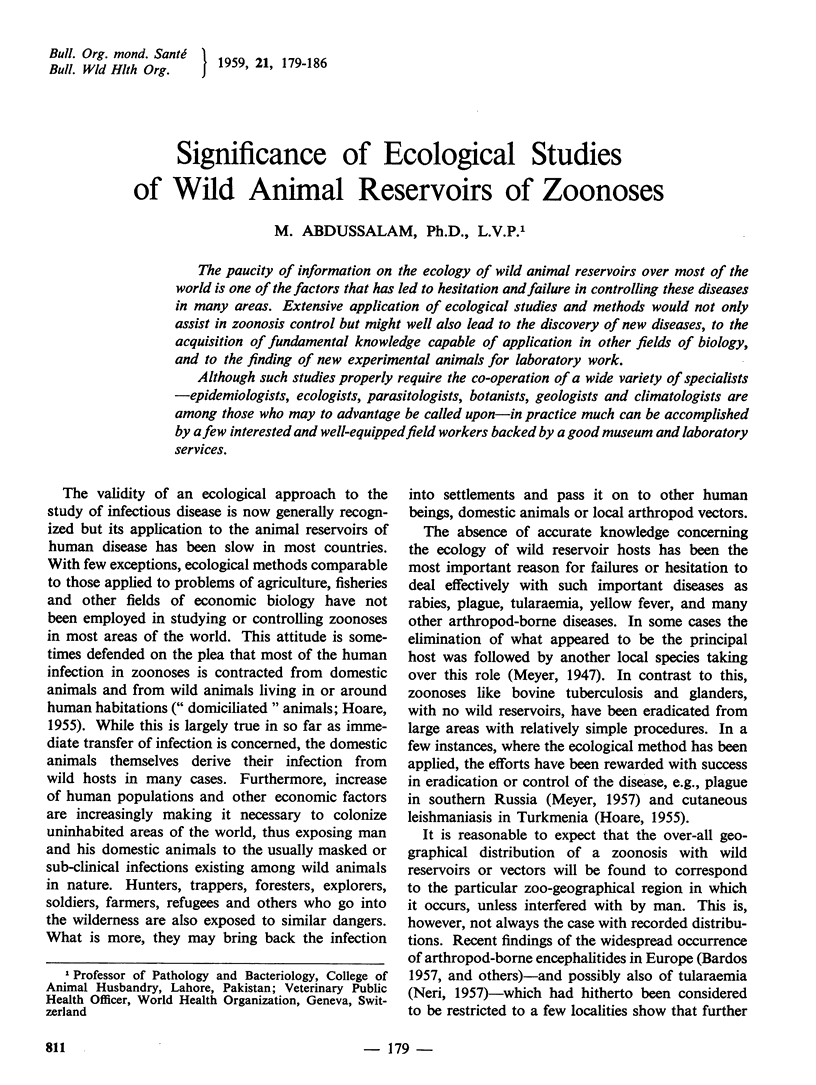
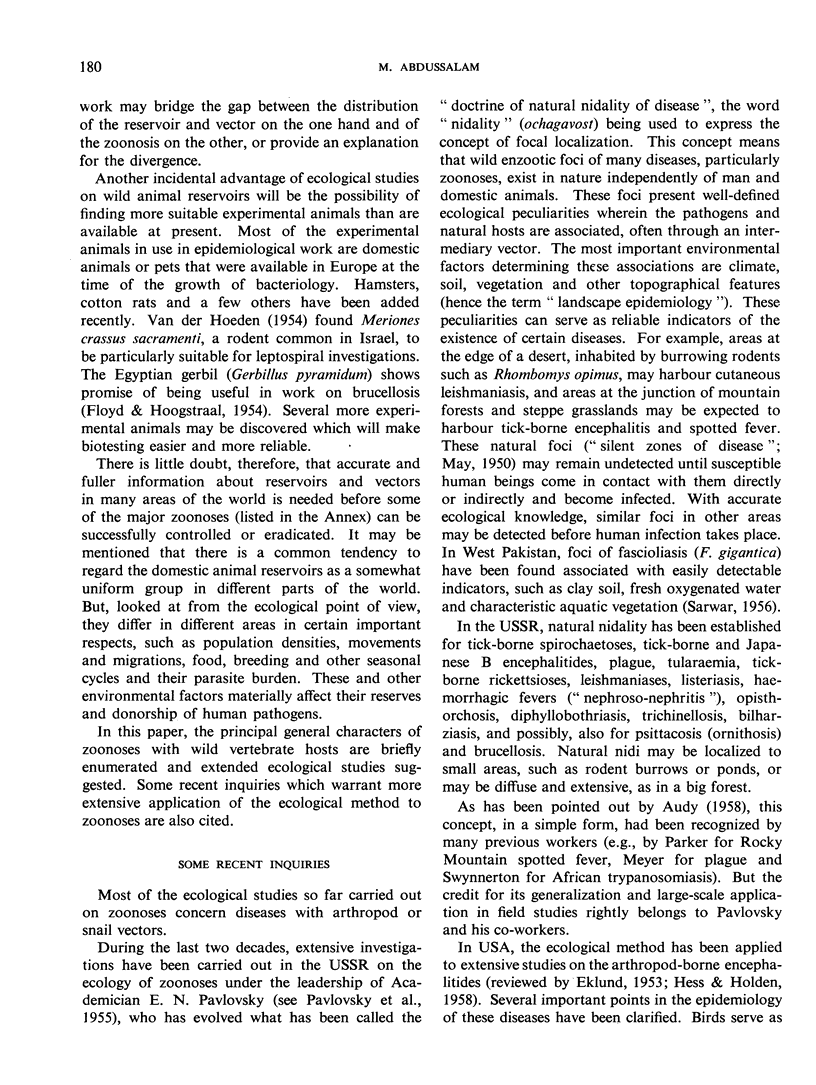
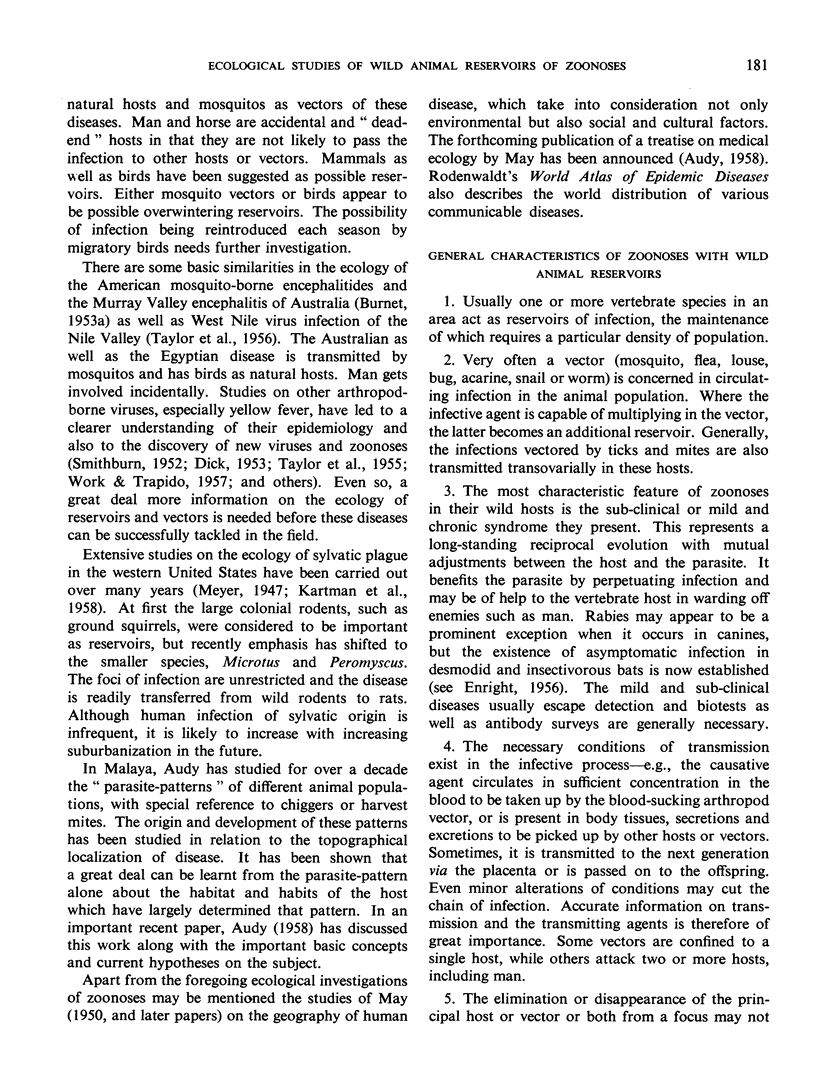
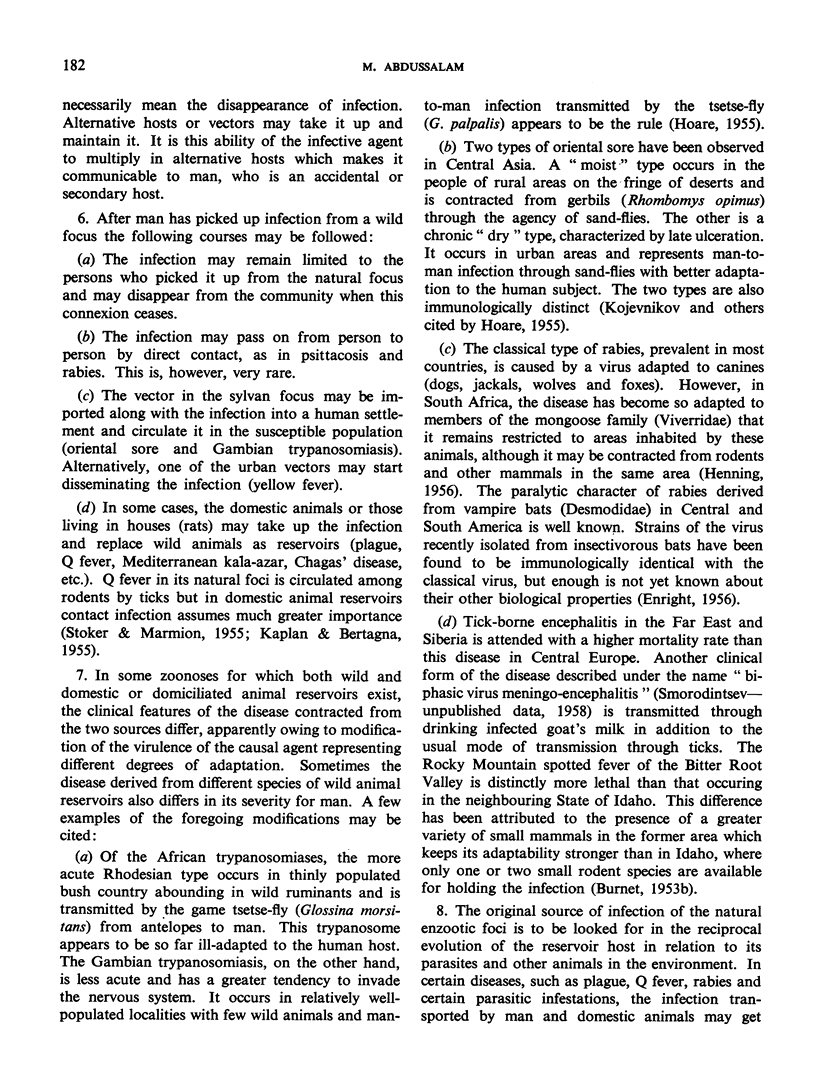
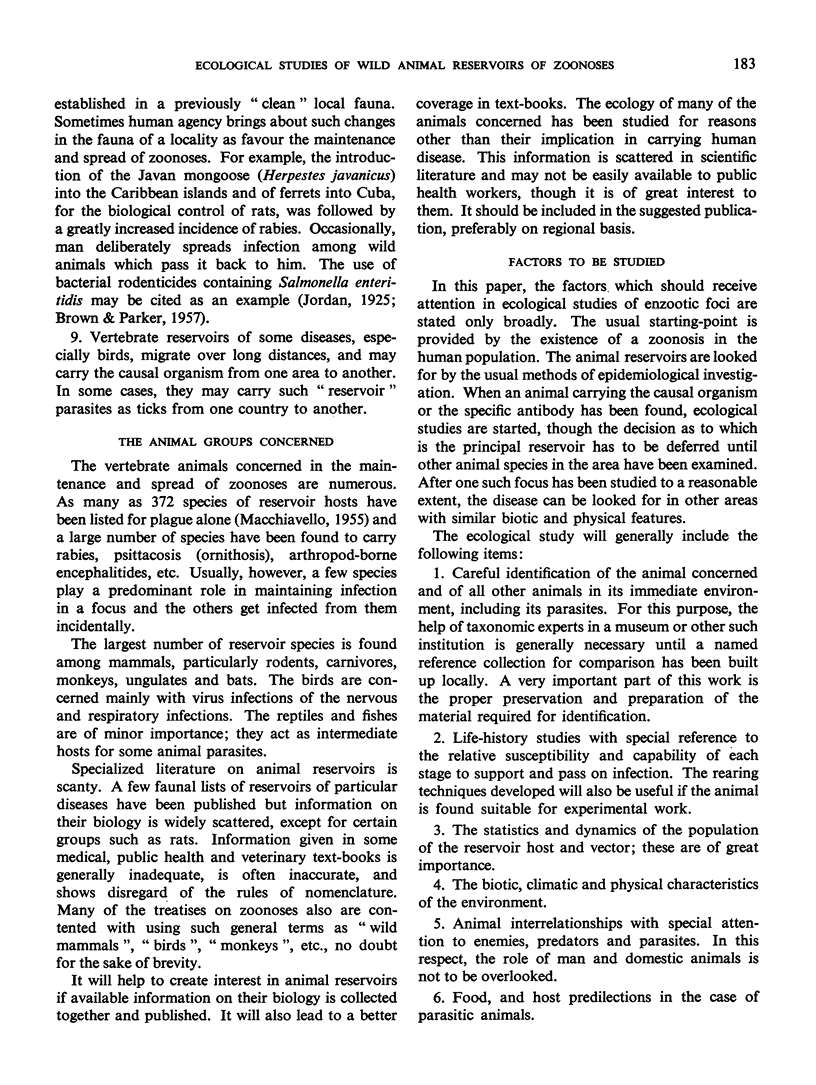
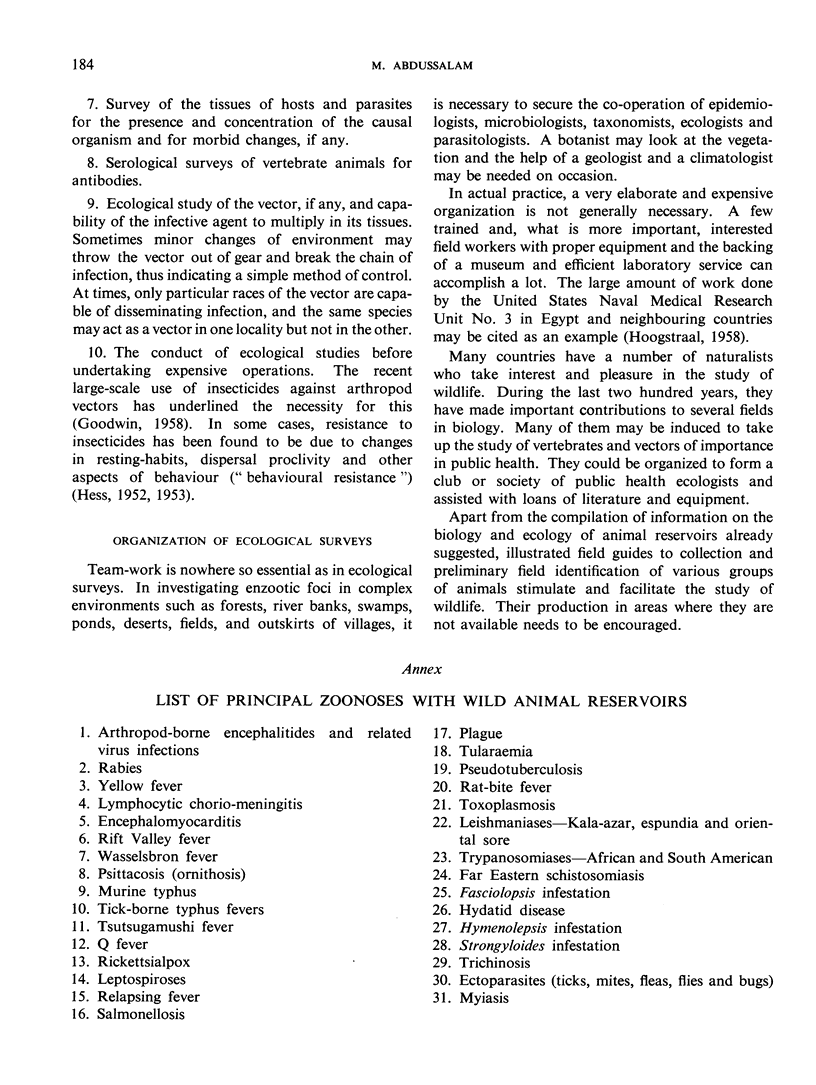
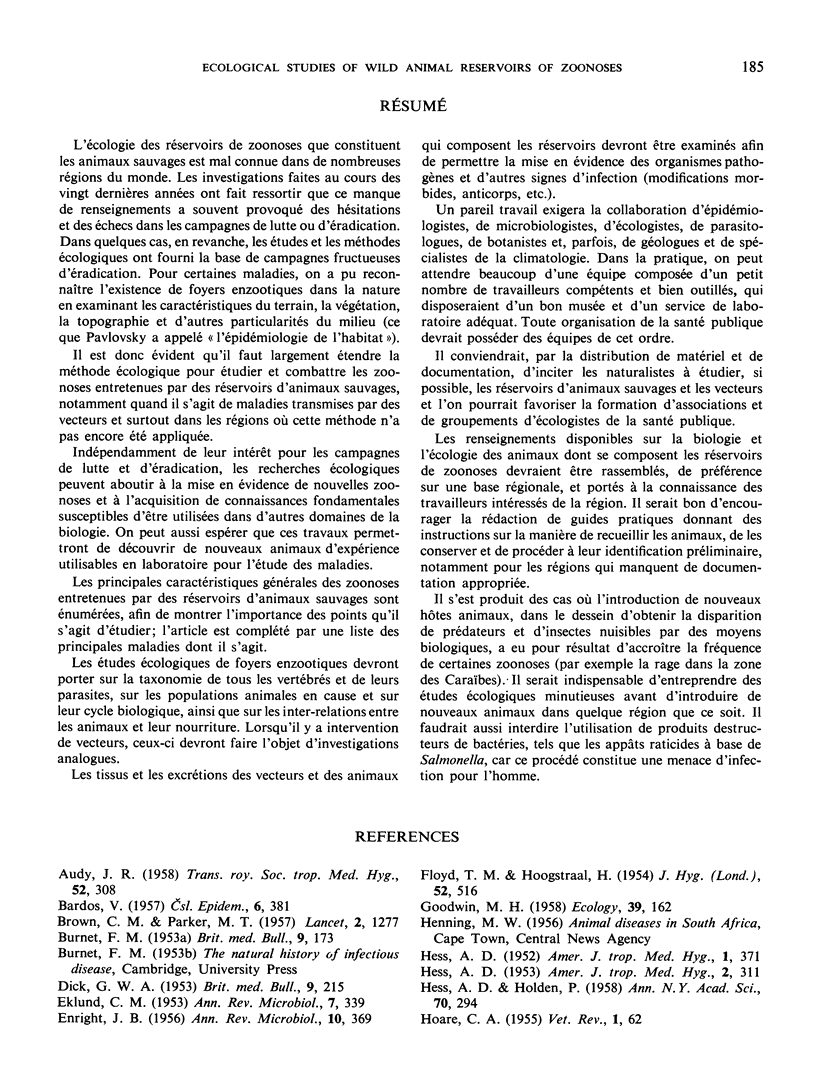
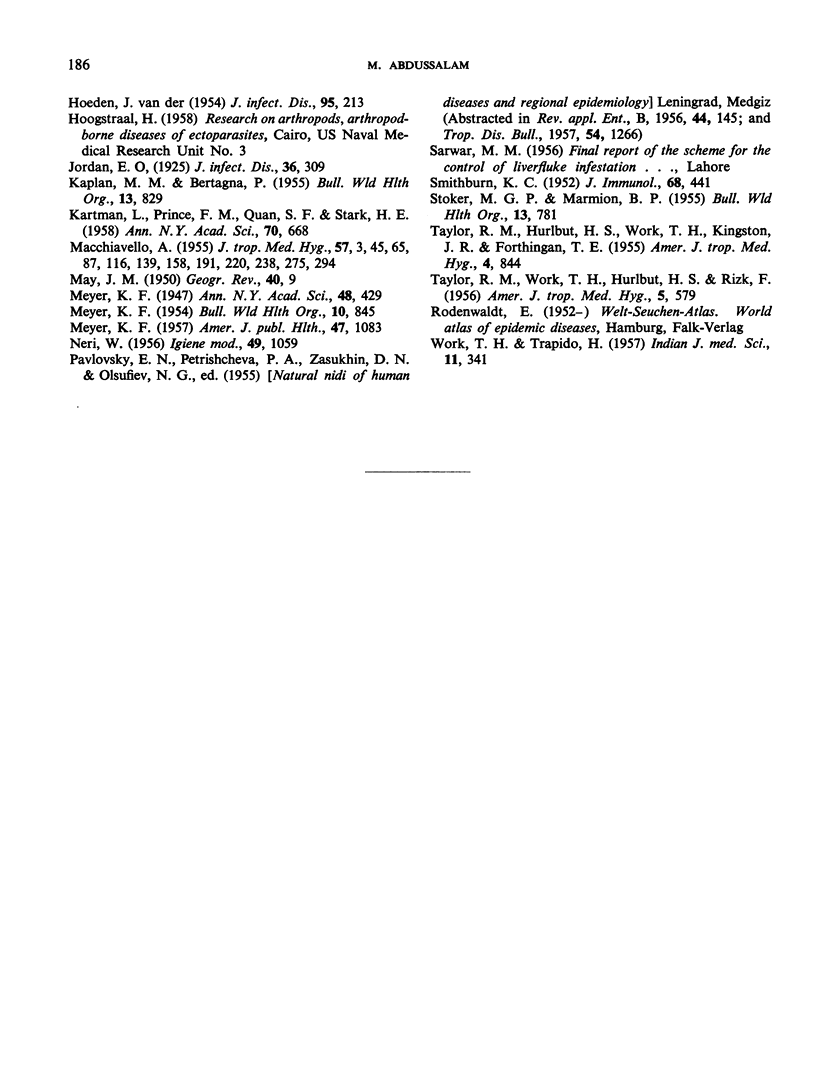
Selected References
These references are in PubMed. This may not be the complete list of references from this article.
- AUDY J. R. The localization of disease with special reference to the zoonoses. Trans R Soc Trop Med Hyg. 1958 Jul;52(4):308–334. doi: 10.1016/0035-9203(58)90045-2. [DOI] [PubMed] [Google Scholar]
- BROWN C. M., PARKER M. T. Salmonella infections in rodents in Manchester, with special reference to Salmonella enteritidis var. danysz. Lancet. 1957 Dec 21;273(7008):1277–1279. [PubMed] [Google Scholar]
- BURNET M. Ecology of virus diseases. Br Med Bull. 1953;9(3):173–176. doi: 10.1093/oxfordjournals.bmb.a074350. [DOI] [PubMed] [Google Scholar]
- DICK G. W. Yellow fever; a problem in epidemiology. Br Med Bull. 1953;9(3):215–220. doi: 10.1093/oxfordjournals.bmb.a074360. [DOI] [PubMed] [Google Scholar]
- EKLUND C. M. The ecology of mosquito brone viruses. Annu Rev Microbiol. 1953;7:339–360. doi: 10.1146/annurev.mi.07.100153.002011. [DOI] [PubMed] [Google Scholar]
- ENRIGHT J. B. Bats, and their relation to rabies. Annu Rev Microbiol. 1956;10:369–392. doi: 10.1146/annurev.mi.10.100156.002101. [DOI] [PubMed] [Google Scholar]
- FLOYD T. M., HOOGSTRAAL H. The susceptibility of some desert rodents to experimental infections with shigella and brucella organisms. J Hyg (Lond) 1954 Dec;52(4):516–524. doi: 10.1017/s0022172400036998. [DOI] [PMC free article] [PubMed] [Google Scholar]
- HESS A. C. The significance of insecticide resistance in vector control programs. Am J Trop Med Hyg. 1952 May;1(3):371–388. doi: 10.4269/ajtmh.1952.1.371. [DOI] [PubMed] [Google Scholar]
- HESS A. D. Current status of insecticide resistance in insects of public health importance. Am J Trop Med Hyg. 1953 Mar;2(2):311–318. doi: 10.4269/ajtmh.1953.2.311. [DOI] [PubMed] [Google Scholar]
- HESS A. D., HOLDEN P. The natural history of the arthropod-borne encephalitides in the United States. Ann N Y Acad Sci. 1958 Jun 3;70(3):294–311. doi: 10.1111/j.1749-6632.1958.tb35389.x. [DOI] [PubMed] [Google Scholar]
- HURLBUT H. S., RIZK F., TAYLOR R. M., WORK T. H. A study of the ecology of West Nile virus in Egypt. Am J Trop Med Hyg. 1956 Jul;5(4):579–620. doi: 10.4269/ajtmh.1956.5.579. [DOI] [PubMed] [Google Scholar]
- KAPLAN M. M., BERTAGNA P. The geographical distribution of Q fever. Bull World Health Organ. 1955;13(5):829–860. [PMC free article] [PubMed] [Google Scholar]
- KARTMAN L., PRINCE F. M., QUAN S. F., STARK H. E. New knowledge on the ecology of sylvatic plague. Ann N Y Acad Sci. 1958 Jun 3;70(3):668–711. doi: 10.1111/j.1749-6632.1958.tb35421.x. [DOI] [PubMed] [Google Scholar]
- MACCHIAVELLO A. Reservoirs and vectors of plague. J Trop Med Hyg. 1954 Jan;57(1):3–8. [PubMed] [Google Scholar]
- SMITHBURN K. C. Studies on certain viruses isolated in the tropics of Africa and South America; immunological reactions as determined by cross-neutralization tests. J Immunol. 1952 Apr;68(4):441–460. [PubMed] [Google Scholar]
- STOKER M. G., MARMION B. P. The spread of Q fever from animals to man; the natural history of a rickettsial disease. Bull World Health Organ. 1955;13(5):781–806. [PMC free article] [PubMed] [Google Scholar]
- TAYLOR R. M., HURLBUT H. S., WORK T. H., KINGSTON J. R., FROTHINGHAM T. E. Sindbis virus: a newly recognized arthropodtransmitted virus. Am J Trop Med Hyg. 1955 Sep;4(5):844–862. doi: 10.4269/ajtmh.1955.4.844. [DOI] [PubMed] [Google Scholar]
- VAN DER HOEDEN J. The pathogenicity of leptospiras to field rodents in Israel; a new test animal for use in Leptospira research. J Infect Dis. 1954 Nov-Dec;95(3):213–219. doi: 10.1093/infdis/95.3.213. [DOI] [PubMed] [Google Scholar]
- WORK T. H., TRAPIDO H. Summary of preliminary report of investigations of the Virus Research Centre on an epidemic disease affecting forest villagers and wild monkeys of Shimoga District, Mysore. Indian J Med Sci. 1957 May;11(5):341–342. [PubMed] [Google Scholar]


